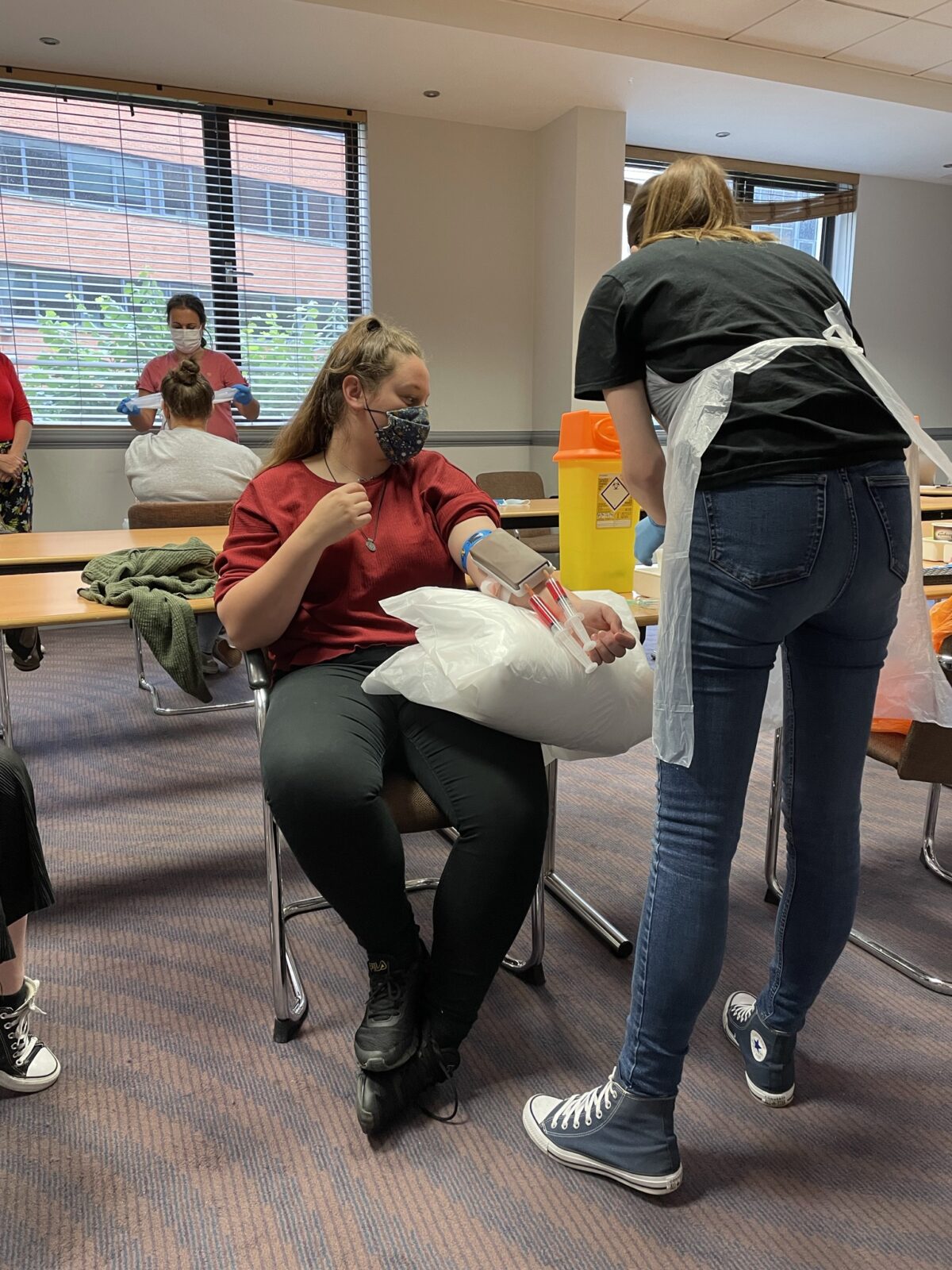Some Known Questions About Northeast Medical Institute - New Haven Campus Phlebotomy Course & Cna Class.
Some Known Questions About Northeast Medical Institute - New Haven Campus Phlebotomy Course & Cna Class.
Blog Article
Some Known Details About Northeast Medical Institute - New Haven Campus Phlebotomy Course & Cna Class
Table of ContentsSome Ideas on Northeast Medical Institute - New Haven Campus Phlebotomy Course & Cna Class You Should KnowNot known Factual Statements About Northeast Medical Institute - New Haven Campus Phlebotomy Course & Cna Class Not known Facts About Northeast Medical Institute - New Haven Campus Phlebotomy Course & Cna ClassThe Buzz on Northeast Medical Institute - New Haven Campus Phlebotomy Course & Cna ClassExamine This Report on Northeast Medical Institute - New Haven Campus Phlebotomy Course & Cna ClassSome Ideas on Northeast Medical Institute - New Haven Campus Phlebotomy Course & Cna Class You Should Know
Nevertheless, making use of such tools need to be accompanied by other infection prevention and control practices, and training in their use. Not all safety and security devices apply to phlebotomy. Before picking a safety-engineered device, individuals should thoroughly check out offered gadgets to identify their ideal usage, compatibility with existing phlebotomy methods, and efficiency in shielding team and clients (12, 33).For setups with low sources, cost is a motoring variable in procurement of safety-engineered tools. Where safety-engineered gadgets are not available, experienced usage of a needle and syringe is acceptable.
labelling); transport problems; analysis of outcomes for professional management. In an outpatient department or clinic, supply a dedicated phlebotomy cubicle containing: a clean surface with two chairs (one for the phlebotomist and the other for the individual); a hand laundry container with soap, running water and paper towels; alcohol hand rub. In the blood-sampling space for an outpatient division or facility, give a comfy reclining sofa with an arm remainder.
Northeast Medical Institute - New Haven Campus Phlebotomy Course & Cna Class Fundamentals Explained
Make certain that the indicators for blood tasting are plainly defined, either in a created procedure or in documented instructions (e.g. in a research laboratory kind). Gather all the tools needed for the treatment and area it within secure and easy reach on a tray or cart, guaranteeing that all the items are plainly noticeable.
Where the person is adult and conscious, follow the steps detailed below. Present on your own to the patient, and ask the person to mention their complete name. Inspect that the lab kind matches the individual's identification (i.e. match the patient's details with the research laboratory kind, to ensure precise identification). Ask whether the license has allergic reactions, anxieties or has actually ever fainted during previous shots or blood attracts.
Make the person comfy in a supine position (if possible). Location a tidy paper or towel under the individual's arm. Review the examination to be executed (see Annex F) and obtain spoken authorization. The person has a right to reject an examination at any kind of time prior to the blood tasting, so it is essential to make sure that the individual has comprehended the procedure.
The Northeast Medical Institute - New Haven Campus Phlebotomy Course & Cna Class Statements
Extend the client's arm and examine the antecubital fossa or forearm. Find a capillary of a great dimension that is noticeable, straight and clear.
DO NOT insert the needle where blood vessels are diverting, since this boosts the opportunity of a haematoma. The vein must be noticeable without using the tourniquet. Locating the capillary will assist in determining the appropriate size of needle. Apply the tourniquet regarding 45 finger widths above the venepuncture site and re-examine the capillary.
Samplings from central lines carry a danger of contamination or erroneous laboratory examination outcomes. It is appropriate, yet not optimal, to draw blood specimens when very first presenting an in-dwelling venous device, prior to connecting the cannula to the intravenous fluids.
Northeast Medical Institute - New Haven Campus Phlebotomy Course & Cna Class Fundamentals Explained
Enable the area to dry. Failing to enable enough contact time raises the threat of contamination. DO NOT touch the cleansed site; in certain, DO NOT place a finger over the vein to guide the shaft of the revealed needle. It the site is touched, repeat the disinfection. Execute venepuncture as complies with.
Ask the individual to create a hand so the capillaries are more prominent. Get in the blood vessel promptly at a 30 degree angle or much less, and remain to introduce the needle along the capillary at the most convenient angle of access - CNA Training. When enough blood has been collected, launch the tourniquet prior to taking out the needle
Northeast Medical Institute - New Haven Campus Phlebotomy Course & Cna Class Fundamentals Explained
Withdraw the needle carefully and apply gentle stress to the website with a clean gauze you could try here or dry cotton-wool sphere. Ask the patient to hold the gauze or cotton woollen in area, with the arm prolonged and increased. Ask the patient NOT to flex the arm, since doing so triggers a haematoma.

Facts About Northeast Medical Institute - New Haven Campus Phlebotomy Course & Cna Class Revealed
Do not press the syringe bettor since added pressure raises the risk of haemolysis. Where possible, maintain televisions in a rack and move the rack in the direction of you. Inject downwards right into the ideal coloured stopper. DO NOT get rid of the stopper since it will launch the vacuum cleaner. If the example tube does not have a rubber stopper, infuse extremely slowly into television as reducing the pressure and speed made use of to move the specimen minimizes the risk of haemolysis.
:max_bytes(150000):strip_icc()/Primary_Image-b2e24c37575f48279cff673865d3853c.jpg)
Report this page